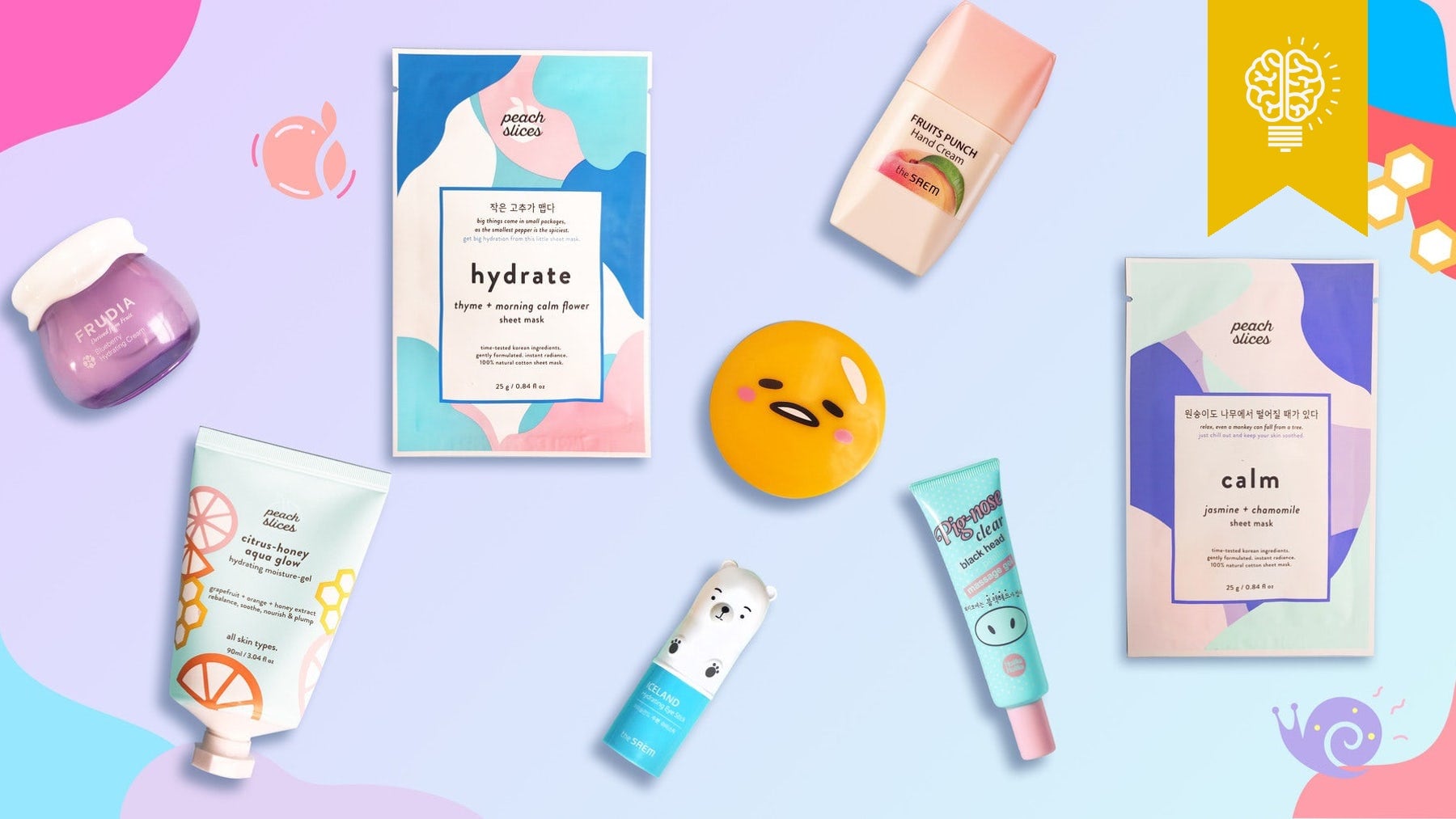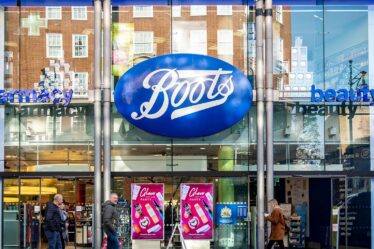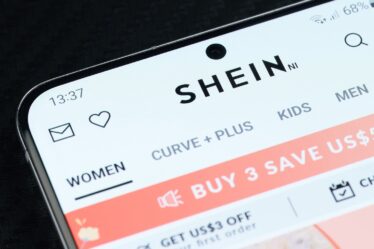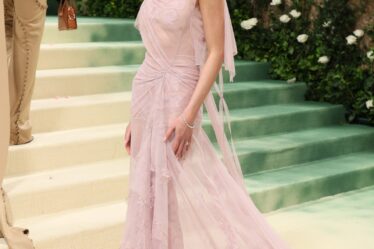
NEW YORK, United States — I’ll never forget the day a shiny red (plastic) apple landed on my desk. It looked like a toy, but inside was a whipped dollop of hand cream. So cute! I displayed it (without bothering to try it) on a shelf in my office with other stylish trophies. Shortly thereafter, passing through Seoul airport en route to Bali for a summer holiday, I stopped dead in my tracks in front of an open-air beauty stand selling brightly coloured lip glosses and solid perfume sticks capped with bunny ears. Obviously, I had to have them all.
Still, I regarded Korean beauty — or K-Beauty, as it’s become known — as a nice distraction, a good story, an ideal Instagram. It brightened up a category that had become serious and sluggish. But cute is not forever.
And yet, four years later, the K-Beauty Boom shows no signs of waning. It is growing as a category, suggesting it might have real staying power, and its influence — fuelled by startling innovation, which extends way beyond bunny ears — has seeped its way into key offerings from the biggest American and European players on both the prestige and mass landscape. Look no further than Lancôme and Maybelline’s cushion compacts. BB (and CC) Creams from Estée Lauder, Clinique, Burt’s Bees, Tarte, Dr. Brandt, and on and on. And don’t forget sheet masks. And snail slime. It all came from Korea.
Part of the allure: Korean beauty offers what Christine Chang, co-founder of Korean e-tailer and distributor Glow Recipe, calls “‘skintertainment.’ It’s a sensorial, pampering approach. The ingredients are fun; the packaging is fun; the application methods are unusual.” Masks rubberise, bubble, and fizz; capsules pop; waxy cleansing pomades — called sherbets in the K-universe — melt into milky oil in the palm of your hand. A black under-eye sheet mask, which stretches across the bridge of the nose, comes in the shape of a bat.
“It brings an element of efficacy-plus-fun, which skin care really needed,” says Chang. Not only has K-Beauty had a laser-like pull on makeup-obsessed millennials, introducing them to the skin care aisle early, but “I think an older demographic is looking for a refreshing approach to beauty, too,” says Chang. She points to Blithe’s Tundra Chaga Pressed Serum — a multitasker that “looks like flan, has the concentration of a serum, but the hydration of a moisturiser”—which sold out during an appearance this past December on QVC, where, she notes, the average viewer age is 55.
Not only do K-centric beauty commerce sites continue to thrive, but big retailers, which at first just dipped in a toe (a BB cream here, a few sheet masks there), are now investing more meaningfully in the category. In response to customer demand, Ulta has doubled-down on Korean products with natural ingredient stories. Sephora has dug in deep, too, carrying significant product offerings across its stores in Europe, and making real commitments—a landing page on the website, animated store fronts and windows — in the US.
“The business is substantial, and is growing,” says Priya Venkatesh, Sephora’a vice president of skincare merchandising, who has devoted trend walls to “the best of K-Beauty” in all North American stores. Alicia Yoon — among the first K-Beauty e-tailers/curators/distributors on the block, who launched Peach & Lily back in 2012 — debuted an ongoing Peach & Lily-branded installation with Target this past January, and recently contributed “Peach & Lily Picks” to Barneys NY’s Mask Bar. Peach & Lily opened its first shop-in-shop in Macy’s’ Flushing, NY store in November 2015, and will soon roll out a special curation for CVS, with selections from her Peach Slices collection of masstige products.
Meanwhile, Tony Moly — purveyor of those bunny-eared glosses and banana-shaped hand lotions, which it stocks in Selfridges, Sephora, Ulta, and Urban Outfitters — is proliferating at breakneck speed. Based on a franchise model, the company has opened stand-alone retail stores across Asia (over 700 in Korea alone), in Russia, Spain, Mexico, and the US, with stores in Los Angeles, San Francisco, Dallas, Atlanta, and Manhattan — the latest, in the World Trade Center Oculus — with more to come.
While K-Beauty may initially rope in the curious with what Chang terms the “surprise and delight factor,” what’s really fuelling its sustained success is innovation and speed. Among those benefiting from all that innovation (and visiting Seoul’s contract manufacturers themselves): brands from the West. But where many of the established Western superpowers are still finally adding that sheet mask, essence, or cleansing oil into their lineup, the Koreans are charging fearlessly forward, launching product after product into the beauty stratosphere. (Fast absorbing facial oils—for day—that dry matte! In-shower masks!) Like many of today’s successful indie brands, they have shown that in this saturated market, being nimble is what pays off.
As a trend, K-beauty is hot, but few brands have been clear winners.
“It’s a local market driven by a consumer insanely obsessed by skin as an ideal, and that fuels the companies to continue to innovate,” says Chang. Plus, adds Yoon, “everyone is trying to get into the business. Of the 1,200 beauty brands that were around five years ago, now there are closer to 10,000.” While brands like Tony Moly (which produces over 6,000 SKUs) have their own R&D facilities, most small local companies —and even a number of the industry’s megabrands, some of them from the West — go to Korea’s contract manufacturers for new ideas and formulations.
The worrisome aspect, for us Westerners, is that it feels like a good chunk of the innovation, excitement and buzz in our beauty landscape is currently coming from elsewhere. Companies that were regarded as market leaders and trend drivers aren’t necessarily the first out of the gate with a great new idea anymore. Skin care can feel like a chore. Anyone who can make it a pleasure (and deliver results) will probably get my money. And it’s not just about the quirky, millennial- and Gen Z-targeted stuff shaped like panda heads and fruit. Real advances are coming out of Korea. And once they have a hit, they keep improving upon it. The new generation of sheet masks, for example, goes “way beyond standard microfibre,” says Charlotte Cho, co-founder of the e-tailer and distributor Soko Glam. There are pore-tightening clay-based iterations, detoxifying charcoal versions that bubble and foam, and delicate laser-cut “lace” sheet masks that, when worn, look like something off the McQueen runway.
And, buckle up, because K-makeup is coming. Korean women, who have not traditionally worn much makeup (why cover up an immaculate complexion?), have become more comfortable with the concept thanks to the cushion and BB hybrids, and are now ready to dive in, says Cho. Instead of the soft, sheer shades that have been popular in the past, “now they’re into vivid, pigmented colours and contouring,” she says. Soko Glam just launched Etude House, owned by the luxury conglomerate Amoré Pacific. “It’s almost like fast makeup: They constantly rebrand packaging and create limited edition colours. I think they can rival the Elfs and NYXes of the world,” says Cho. “They created a temporary tattooing gel for brows that peels off — it’s great on video. That sold out on our site immediately.”
In a climate where being fast and flexible, able to swiftly respond to emerging trends, market shifts, and consumer feedback, is everything, many of these emerging brands can appear like speedboats doing figure-eights around ocean liners. They can move faster; they can turn on a dime.
But they can also tip over and sink more easily. The challenges to K-Beauty’s longevity are notable. “As a trend, K-Beauty is hot, but few brands have been clear winners,” says Chang. She highlights Amoré Pacific and the derm collective Dr. Jart+ as brands with some established awareness, and acknowledges that part of her role as a distributor is to help grow her stable of brands by distilling their stories, so they can become known in the West as more than “just ‘something from Korea.’”
Education — what to use, when, how, and why — is key, as there is “a lot to unpack” for novices trying to understand the complexities (and even the basics) of Korean beauty, says Yoon. Glow Recipe is focusing on its YouTube channel to help demystify Korean products and practices; on the Peach & Lily and Soko Glam websites, licensed aestheticians and beauty consultants are on-call to help customers create tailored regimens. It is a unique beauty culture, with its own set of rules and rituals. And while I am not looking for 18 steps to add to my evening routine, I did pick up a few tricks (see: the three-second moisturising rule), and new, rather illuminating ways to simply think about beauty while scrolling around The Klog, Soko Glam’s newsy content site.
Yoon feels that once K-Beauty is truly part of the beauty landscape — no longer a culty curiosity — it will really have arrived. Yoon sees more promise in her CVS collaboration, which will hit thousands of stores across America this spring. “When you make it really accessible, and you start seeing it everywhere, that’s going to help it go mainstream.”
Standing in her Macy’s shop in Flushing, nestled between Estée Lauder and Kiehl’s, across the way from La Prairie and La Mer, Yoon recalls her first conversation with the retailer: “This is a really serious skin care door. Macy’s said, ‘Are you sure you want to start here?’ And I said, ‘Yes.’ I wanted the bar to be set high, to see if these brands could stand up. If it was going to fail, I wanted to fail fast.” How’s she stacking up so far? Opening ten more locations in May.
Related Articles:



